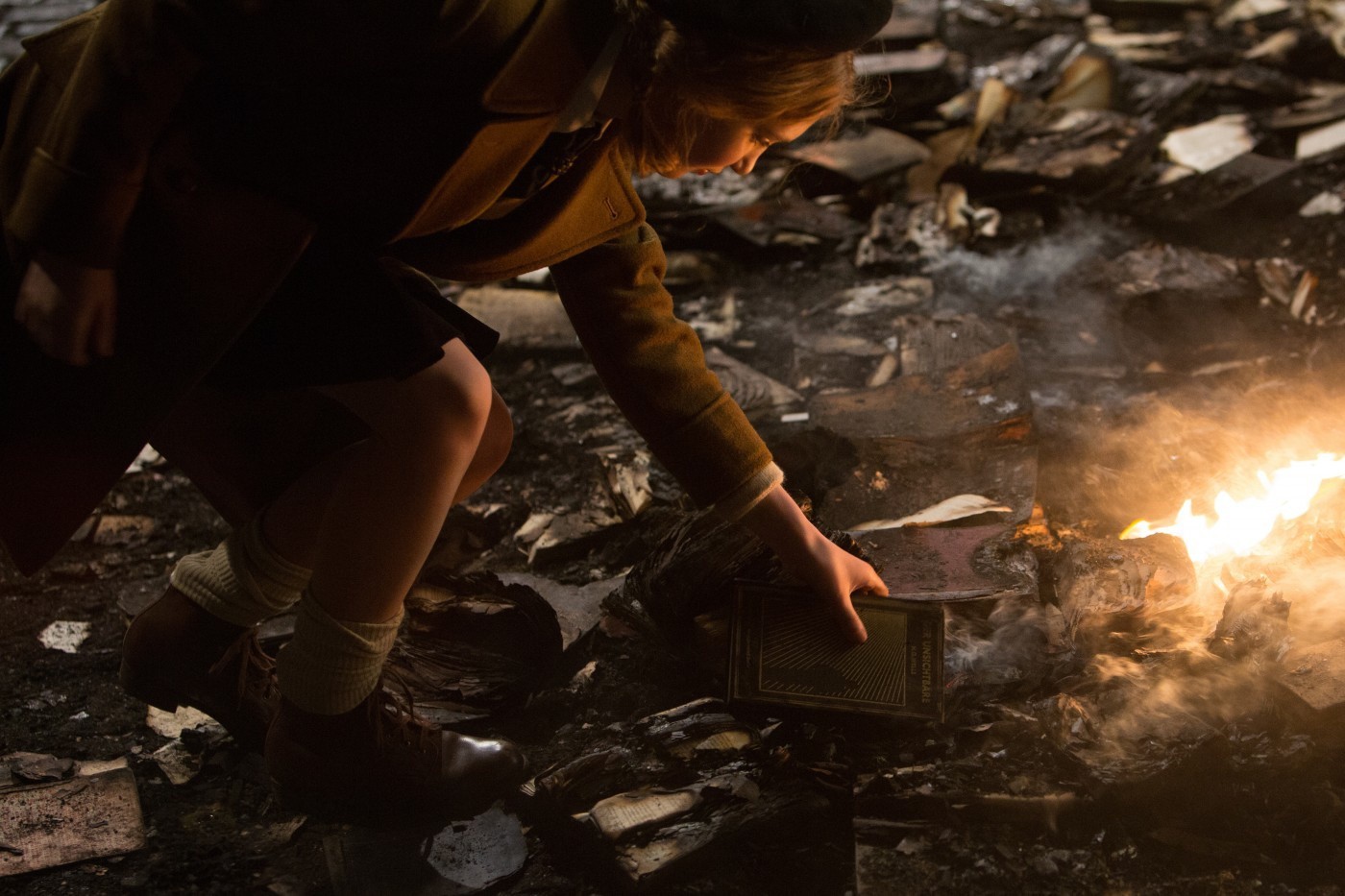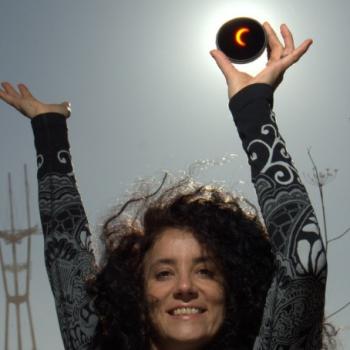 It’s awards season in Hollywood, that seemingly endless cycle of self-congratulation that mercifully does end with the distribution of little gold men for what is supposedly the best film-making of the year. And it’s my pleasure as a Christian who also loves movies to report that some of the films being recognized this season actually deserve it.
It’s awards season in Hollywood, that seemingly endless cycle of self-congratulation that mercifully does end with the distribution of little gold men for what is supposedly the best film-making of the year. And it’s my pleasure as a Christian who also loves movies to report that some of the films being recognized this season actually deserve it.
I think I’m going to call 2013 “the year of human exceptionalism” for movie-making. Some of its finest films offered powerful portraits of a single person who must rise above great challenges for freedom, dignity or life itself. It was a throwback to the right kind of humanism. I sometimes think that if our society could back-track even just to the point where man was still seen as uniquely valuable, it would be a vast improvement over the post-modern rot that has set in today. Though I have no hope that a handful of stellar films will do the trick, or even convince their own makers of the deeper truths behind them, I can at least praise good work when I see it.
In this post I will sketch out the premise of each film (spoiler-free!) and try to explain concisely why it deserves a place in my Top 5. Although not all of these movies were nominated for awards, I will also throw in an “Oscar bait” category for those that were, with asterisks for win predictions. Finally, I will clearly indicate any content concerns, as I am not one of “those” Christian movie-watchers who scorn content advisories. While I do believe discerning Christian viewers can take something of value from all of these films, your mileage may vary. Be heartily encouraged to use your own judgement.
But before I jump into the list, I want to pause and say a few words about one film that I agonized and agonized over, even placing number one at one point, before finally choosing to drop it from the top five altogether upon re-watching and reflection. It’s a hot contender for all the major awards, including Best Picture. Yet even though by some measures it may be the best film of 2013, topping secular and Christian film critics’ lists alike, it wasn’t my favorite film.
That film was 12 Years a Slave, based on the ex-slave memoir of Solomon Northup, who was kidnapped as a free Northeastern black man and sold into captivity for twelve years before finally regaining his freedom. Certainly the performances, directing, cinematography and score (Hans Zimmer) are powerful. And the detailed extent to which Northup’s original account is preserved, down to his exact wording, is extraordinary. The language of the film is borderline Shakespearian. I was moved to tears the first time through. What changed my mind? Simply this: When I went to review the film, I realized I was struggling to recall where the light was.
The scope of its vision is clear. It wants to be to slavery what Schindler’s List was to the Holocaust. And yet there’s a disturbing lack of the one thing that made that film bearable: hope. Yes, Northup determines not to fall into despair and is finally reunited with his family. But despite a superb and emotional performance from British actor Chiwetel Ejiofor, the viewer is left more drained than inspired by the film’s end. To be fair, the most disturbing scenes come straight from the book, and in some cases have actually been shortened from Northup’s descriptions. I recognized and respected that, even as I carefully anticipated and fast-forwarded through more than one without the slightest compunction. Sometimes, they even bear an uncanny resemblance to Christ’s Passion (example: Northup is hung from a tree for several hours and is offered a drink of water by another slave girl). I also recognized that the slavers were not Hollywood caricatures but real flesh-and-blood men, whose racist spewing was copied word-for-word from eyewitness testimony.
However, fiction did stray from fact in some key ways. Master Epps, by far the most sadistic of the slavers, was turned into a Bible-thumping “Christian” who superstitiously blames the slaves for bad crops and prides himself on his piety. Northup does describe a different slaver who reads Scripture at the slaves (“And that servant who doesn’t obey his Lord shall be beaten with many stripes”), but Epps isn’t remotely religious. And curiously, gone are all Northup’s references to his own prayers and meditations. Gone too are several other grace notes in Northup’s narrative that would have given more relief than the film affords—for example, his beautiful description of their few precious days of respite during Christmas. This could have been used to create a moment similar to the Shabbat celebration in Schindler’s List. As it is, there is only one transcendent scene of hope in the film, and that is when the slaves break into a spiritual around the grave of one of their brothers. I’ll include that scene here because it truly is great, and I only wish it wasn’t so isolated in the soul-deadening sea of depression that surrounds it:
http://youtu.be/mAZhQQN758g&rel=0
It’s not that I wanted the movie to sugar-coat the ordeals of slavery, or resolve its several tragic sub-plots neatly where Northup gave no resolution. It’s just that I’m not certain the film needed to be made. From a technical perspective, the episodic nature of the story is a hindrance to the adaptation when it comes to plotting and rich character development. As for the film’s “cultural significance,” anyone can read the memoir if he’s interested in getting a brutally accurate account of slavery in the deep south. We don’t have to watch torture played out on screen to get the picture. Others will disagree and say this was a “necessary” film, but that’s simply my opinion. I will concede that it was powerful, deep, and certainly more worthwhile than the kind of crud Hollywood usually shovels out. Northup’s story is a triumph of the human spirit, and we can’t help weeping with him as he embraces his loved ones in the end. But ultimately, I personally found it unsatisfying. However, if you saw the film and reached a different conclusion, I would love to hear your thoughts.
Now, on to my actual top five!
5.The Book Thief
“When life robs you, sometimes you have to rob it back.”

Based on the best-selling novel by Markus Zusak, this quiet story of civilian life in Nazi Germany isn’t your average children’s tale. To my knowledge, no other children’s story is narrated by Death. Through his eyes, we are introduced to Lieszl Meminga, a girl who’s already suffered tragic loss and must begin a new life when placed for adoption by her politicially dissident mother. Her new parents are vividly, wonderfully played by Geoffrey Rush and Emily Watson. Mama is cross and hard at first. Papa is warm, twinkly and affectionate. (Think Anne of Green Gables.)
Lieszl arrives sad, withdrawn, and clutching her only possession: a stolen volume called The Grave-Digger’s Handbook. We soon learn that the child is illiterate but desperate to learn how to read anything. When Papa discovers the girl’s secret, he shows her another secret: a dictionary of words written on the walls of their basement. He teaches her to read, and eventually she triumphantly finishes that first grim tome. From that point on, she seizes every opportunity to get her hands on a book, even at great risk to herself. So she discovers the power of words and story to sustain the soul through hardship.
By giving us a glimpse of Nazi Germany from the Germans’ side, this film allows us to see how small and large choices accumulate to shape a soul—a man’s soul, a nation’s soul. We watch ordinary people pick their paths for good or ill as they are caught up in the current of history (including Lieszl’s own family, in the central moral choice of the film). In one particularly chilling scene, a cheerful children’s choir sings a Nazi anthem as soldiers are shown smashing windows and dragging Jews from their homes. Yet the look of the film retains a soft, almost dream-like quality. Much is left to the viewer’s imagination. But Death is always hovering around the edges.
I know I’ve just described what sounds like a dark film, but truthfully, it’s not. There’s light everywhere. You see it in the quiet honor and love of Lieszl’s parents, in the vibrant loyalty of her childhood companion Rudy, in the innocent wonder behind Lieszl’s own eyes. But there is an undercurrent of sadness that gives depth to the joy. And just when I thought I knew what to expect, it surprised me. No, not every moment works perfectly, and yes, you might be surprised to realize it’s not directed by Steven Spielberg in a sentimental mood. But it is a film well worth seeing.
Oscar bait: Score (John Williams)
Content concerns: One “hell” and a few misuses of “God.” Some people are shown being roughly handled and taken away by Nazis. A man is knocked down. There are some non-graphic war images. No sexual content. My recommended age range: tweens and up.
Trailer
http://youtu.be/zHFM4XAuy-Y&rel=0
4. Gravity
“In space, no-one can hear you scream.” [Wait, wrong movie…]

Sandra Bullock and George Clooney in space? Pffffff, yeah right. Or so I thought. Boy, was I wrong.
So, first of all, I didn’t see this movie in 3-D. Everyone said I had to in order to get the full “experience.” But I found it plenty impressive anyway. Basically, every Oscar that has to do with how a film looks… yeah, you can be pretty sure this is walking away with all of those.
Here’s the setup: It’s a pretty ordinary day for engineer Ryan Stone. She may feel a little queasy, but she’s focused on the task at hand as she works to repair a panel on the Hubble. Not bad for her first spacewalk. And wise-cracking veteran astronaut Matt Kowalski is a comforting presence. Then, abruptly, all hell breaks loose. Debris from an asteroid collision rips through the space station, leaving only two survivors: Kowalski and herself. Together, they must chart a course towards oxygen, life, and a way back home.
I’ll admit that there’s a lot of suspension of disbelief going on here. Time after time, when it seems there’s no solution, it turns out there’s another station, over there, or another… something or other that carries our protagonist(s) to the next level. But, somehow, it made everything feel real, thereby managing to scare the heck out of me at the same time it required me to suspend disbelief. Besides the visuals, I have to rave about the sound: The technique of moving in and out of a character’s helmet, so that one minute you hear a dull thudding and the next minute complete silence, is just brilliant. And the terror Sandra Bullock conveys as Stone feels 100% genuine. She’s the every-man, relying on sheer wits and guts to overcome seemingly impossible odds. Her character is the perfect blend of vulnerability and coolness under pressure. And Kowalski’s unflagging good spirits may seem to clash with the tone, but people critiquing the film who have known actual astronauts will tell you there are characters just like Kowalski in real life. I can add that I’ve gotten the same impression from talking with my pastor, who worked for some of the most famous astronauts of the 60s as an equipment designer.
Finally, as others have noted, there are a couple intriguing references to faith here. It’s always oddly conspicuous when a disaster film studiously avoids all appeals to faith or God in the midst of crisis. Here, we have a character who admits she has “never learned how to pray,” but can’t help wondering aloud about prayer and the afterlife. These moments are brief, but welcome and poignant.
The film isn’t perfect. The script is slight, and the director goes a bit over-board with a few visual metaphors. But honestly, the story was so gripping by itself that you might not even notice them. The movie’s been compared with 2001: A Space Odyssey, but I thought it felt more like Apollo 13 in certain places, which is much more interesting to me.
With that, I’ll leave the rest for you to discover… if you dare!
Oscar bait: Picture, *Director, Actress, *Effects, *Cinematography, Film Editing, *Sound Editing, *Sound Mixing, Score
Content concerns: No sexual content. Matt begins to tell what sounds like a hoary joke in the making, but doesn’t get to the punch-line. Constant peril, of course. And the floating bodies of Kowalski and Stone’s dead companions inside the station are a bit unsettling. One companion is discovered missing his face (we simply see the outline of his helmet and a gaping hole). Ryan says the f-word once, under great stress. A handful of lighter profanities. My recommended age range: teens and adults.
Trailer
http://youtu.be/OiTiKOy59o4&rel=0
3. Captain Phillips
“Look at me. Look at me. I’m the captain now.”

This is the true story of a cargo ship hi-jacked by Somali pirates and the ensuing hostage crisis with its captain. It ranks third in my top five for its heart-pounding realism and Tom Hanks’s sweat-soaked, riveting portrayal of an ordinary man forced to overcome his fear under circumstances that would make the bravest soldier blanch.
Although the crew has claimed the film keeps back information about how the captain’s own stubbornness and poor choices contributed to the ship’s capture, I still loved it, and I think his tough personality still came through accurately. Sure, a couple key moments have been “Hollywoodized,” like Phillips willingly giving himself up as a hostage to get the pirates off the ship, or scrawling a last note to his family when he thinks he’s near death. But in most respects it is surprisingly un-Hollywoodish. It’s not glamorous, and most gratifyingly, it doesn’t go out of its way to gin up sympathy for the pirates. There is an added sub-plot that does humanize the youngest one, but it’s not over the top. These guys are pretty much as savage, cunning and greedy as you would expect, particularly the quietly menacing young leader Muse. In a tour de force of understated acting, unknown American Somali actor Barkhad Abdi nearly steals the film from Hanks with his slow smile and cat-like grace. Indeed, Hanks was crowded out of the noms for Best Actor while Abdi was always a lock for the Supporting Actor short-list. But if Hanks’s final scene of the film doesn’t put a lump in your throat, nothing will. For fans of grounded, edge-of-your-seat action drama, this is the one you want to see.
Oscar bait: Picture, Supporting Actor, Writing (Adapted Screenplay), Film Editing
Content concerns: No sexual content. A few instances apiece of some light profanities. Violence is constantly threatened but ultimately consists mostly of blows and the occasional gash to a hand or foot. There are some disturbing quick-cut scenes towards the end that show Phillips being tied, blind-folded and beaten (no blood). There is also one brief, sudden moment when three men are shot off-screen and we see blood spray on the walls. My recommended age range: teens and adults.
Trailer
http://youtu.be/pV-ptQX-75Y&rel=0
2.All is Lost
“I fought to the end. I’m not sure what that’s worth. But know that I did.”

This small independent film generated early buzz, winning various critical awards, but has since been snubbed for a number of Oscars. The most baffling snub is Robert Redford for Best Actor. At 77, he delivers what many have declared a career-best performance. The story is a very simple one. Reminiscent of Hemingway’s The Old Man and the Sea, it’s a straight-up survival tale about one man who must battle the elements alone as the odds pile up against him. It may sound similar to Gravity, but the style is far more minimalist. We get no monologues, no name and essentially no backstory for this character, except one intriguing farewell note he puts in a bottle, which also contains the movie’s title: “All is lost here.” In a few heart-rending words, he apologizes for his failures as a man, for his absences, his flaws. To whom he writes, we never know. We don’t need to.
It was that layered simplicity, which typifies the whole film, that really impressed me. The silence allowed me to absorb every bit of the atmosphere. The tiniest detail had significance. I could almost smell the resin Redford uses to patch the hole in his ship. I could almost reach out and touch everything he handles—the silverware that gives an illusion of home as he cooks and eats dinner, the straw hat he salvages from the flooded wreckage after a storm. Unlike the fantastical CGI-produced Life of Pi, this film is utterly grounded in reality. The lashing rain and waves are all too frighteningly real. But the arc of the story is timeless and full of metaphors for the human condition, building and building to an astonishing climax. After the credits rolled, I said to myself “That was a perfect film. There is not one thing I would have changed about it.” I almost never say that, even about films I love. My lips are sealed beyond that point. Just watch the thing.
Oscar bait: Sound Editing
Content concerns: No sexual content. Plenty of perilous situations where Redford’s character is thrashed about, plunged underwater, critically dehydrated, etc. He sustains one nasty gash to his forehead, for which he scrounges up peroxide and a few bandages. And as mentioned, the Man isn’t one to talk to himself, but in his direst extremity, he does look to the sky and force out one profane word through choking sobs. And yes, you guessed it, it’s the f-word. Though I have to admit, of all the uses of the f-word in film, this would have to go down as the most economical. My recommended age range: That one strangled f-word (and perhaps a half-finished s-word in one other place, though I couldn’t quite catch it) is really the only content concern, so if you have an easy way to mute/filter it, there’s really nothing else to prevent kids 12 and up from seeing the movie.
Trailer
http://youtu.be/Lk_R04LfUQU&rel=0
1.Mud
“There are things you can get away with in this world, and there are things you cain’t.”
Mud: An unpromising title if ever there was one. But trust Jeff Nichols, who is fast becoming one of America’s most insightful directors, to deliver another excellently crafted blue-collar character drama. After much reflection, I’ve come to the conclusion that this is my favorite movie of 2013, and really was my favorite all along even as I was juggling other possibilities in my mind.
The story is centered around two 14-year-old boys living on the Mississippi River in the present day. While exploring an island, they discover a mysterious stranger with a mysterious home—a boat stuck up a tree. (This is known to happen during floods so the image isn’t completely implausible.) Without strong father figures in their own lives, they quickly bond with the man who calls himself “Mud” (Matthew McConaughey–another inexplicable Oscar snub). Soon they’re running errands for him. But he wants more than just food. He wants to put the boat in the water. Because there’s this girl see… and, well, it’s complicated, but he needs their help. Why can’t he simply make the multiple trips back to civilization himself? That’s complicated too.
The film unfolds less like a movie and more like a really good young adult novel, recalling classic fare such as Huckleberry Finn, The Yearling, and Where the Red Fern Grows. It even has echoes of biblical stories like Hosea. The boy Ellis (Tye Sheridan) is really the main character, and this is his coming-of-age story. It’s an achingly truthful, yet beautiful tale. Love and trust are the twin streams running through it all. Ellis’s questions are questions any young man must face in his life. What is true love? Does it conquer all? Can it be a burden? How do you forgive a broken trust? What is honor? What does it take to be a man? A good man? The movie doesn’t offer easy answers. It offers real characters wrestling through real life to reach their own conclusions. Best of all, they are characters we can love and identify with. Viewers who enjoy off-beat Southern tales will love the film, but the heart-wrenching performances of McConaughey and Sheridan give it deeper, wider appeal.
Content concerns: As you might expect given the cultural context, there’s a good bit of salty language used, both by the boys and the adults. Mostly the “s-word” (c.25 instances), a couple SOBs, and a few blasphemies, though no f-bombs. The boys are awakening to the wonder of girls, which manifests itself in sweet ways but also in a couple crude remarks from Ellis’s sidekick Neckbone and one colorful bit of “life wisdom” from Neckbone’s eccentric uncle. (Speaking of the uncle, one especially unnecessary scene touches on his “antics,” though nothing is shown.) The most disturbing scene is when a man hunting for Mud yells at and physically threatens Mud’s girlfriend (briefly shown in trailer). Ellis quickly intervenes but is punched down hard, after which the man waves a knife in the woman’s face and quietly swears to find Mud no matter what before leaving. Fortunately the whole thing is pretty brief and easily skippable if desired. Overall, violence is minimal. Ellis is knocked down one other time. There is a shoot-out with minimal blood. Also, one more key scene of peril that I won’t give away because it’s a spoiler, but it’s not shot particularly graphically. My recommended age range: older teens and adults.
Trailer
http://youtu.be/DTEDfEhKwLo&rel=0
So, if you made it all the way to the end of this post, congratulations! If you like, leave a comment about your own favorite films from 2013. Is there any overlap with my list? If not, have I convinced you to see any of the films recommended here?

















